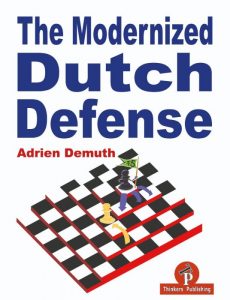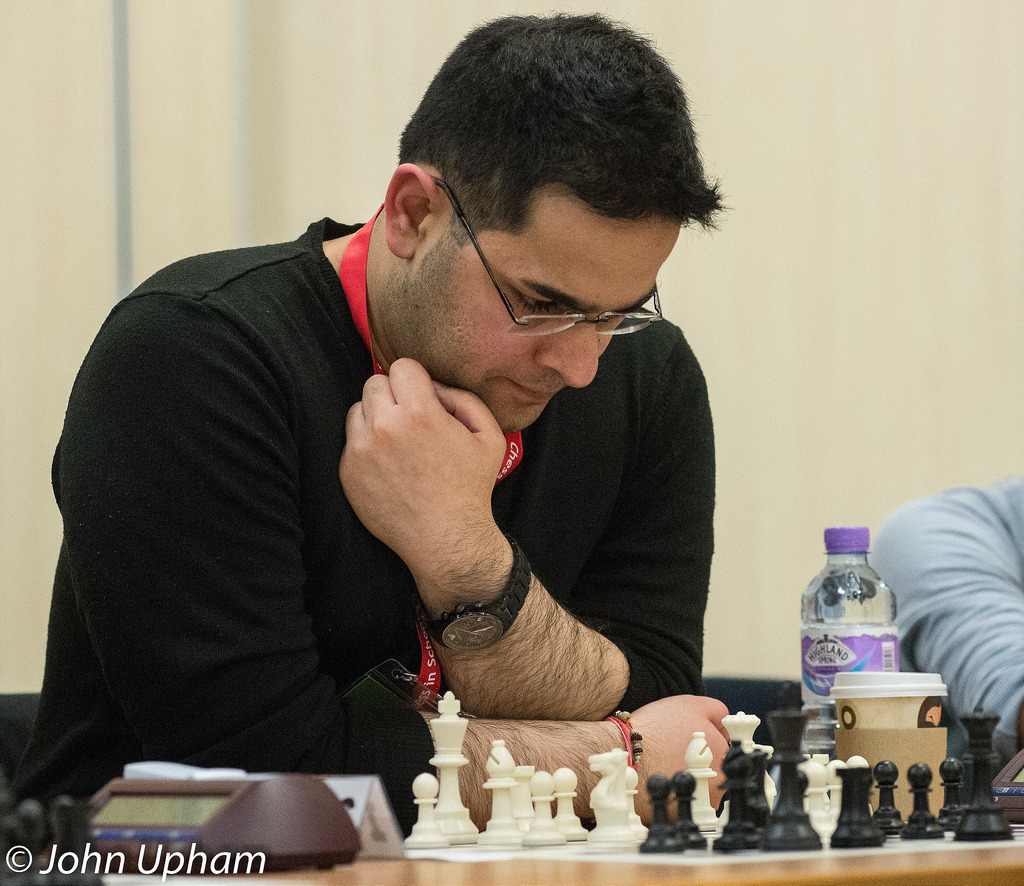
Birthday of IM Ameet Kumar Ghasi (04-ii-1987)
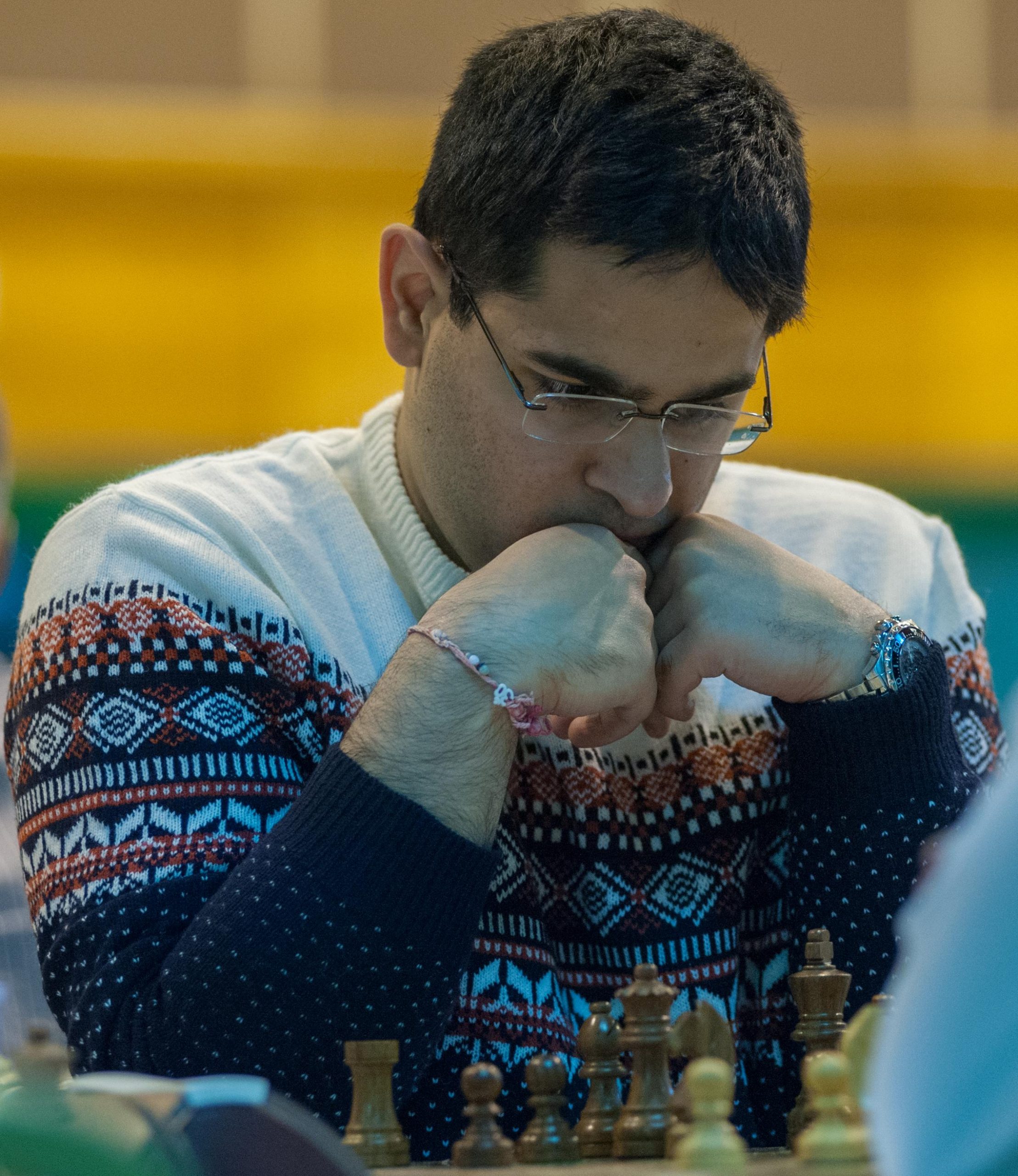
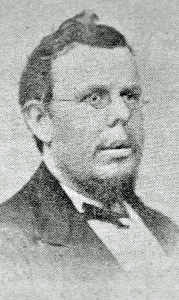
We remember John Wisker who passed away on this day, 18th January, 1884.
According to Wikipedia :
John Wisker (30 May 1846 in Kingston upon Hull, England – 18 January 1884 in Richmond, Victoria) was an English chess player and journalist. By 1870, he was one of the world’s ten best chess players, and the second-best English-born player, behind only Joseph Henry Blackburne.
Wisker moved to London in 1866 to become a reporter for the City Press and befriended Howard Staunton. His proficiency at chess improved rapidly, and he won the 1870 British Chess Championship after a play-off against Amos Burn, ahead of Blackburne, the defending champion. He won again in 1872 after a play-off against the first British champion, Cecil Valentine De Vere. After this second victory, the British championship was not resumed until 1904. Wisker edited chess columns for The Sporting Times and Land and Water. From 1872 to 1876, Wisker was Secretary of the British Chess Association and co-editor of The Chess Player’s Chronicle. After learning that he had contracted tuberculosis, Wisker emigrated to Australia in the autumn of 1876 to try to regain his health. In Australia, he wrote a chess column for the Australasian. In 1884, Wisker died from bronchitis and tuberculosis.

Here is a short item from the Ken Whyld Association web site :
and here is a more detailed article from chess.com
From The Oxford Companion to Chess by David Hooper & Ken Whyld :
John Wisker was an English player and journalist. After moving from Yorkshire to London in 1866 Wisker improved rapidly, so that in the early 1870s he could be ranked among the world’s best ten and second only to Blackburne among English-born players. In 1870 Wisker won the British Championship ahead of Blackburne (the holder) after a play-oil against Burn, and in 1872 he again won the title after a play-off against De Vere. (winner of the first British Championship). By winning twice in succession Wisker retained the trophy and the contests ceased until 1904 (when
Napier won). Against two of his contemporaries Wisker played six matches: Bird in 1873 (+6 =1 -6 and +4 =3 -7) and again in 1874 (+10 =3 -8 and +3 =1 -5); and MacDonnell in 1873 ( = 1 -3) and 1875 ( + 7 =4 -4), Discovering that he had tuberculosis, Wisker emigrated to Australia in the autumn of 1876, hoping to improve his health. In England he edited excellent chess columns in The Sporting Times and Land and Water, and was co-editor of the Chess Player’s Chronicle from 1872 to 1876; in
Australia he edited a chess column in the Australasian.
From The Encyclopedia of Chess by Anne Sunnucks :
British Champion in 1879 and 1872 and Hon. Secretary of the British Chess Association from 1872 – 1877. Wisker was born in Hull. His parents were poor and, he received little schooling, but by his own efforts educated himself and by the time he was 19 was contributing articles to the Fortnightly Review. In 1866 he came to London to report for the City Press and was introduced to London chess circles by Howard Staunton. His play rapidly improved, and his victory in the British Championship in 1870 was achieved after a ply-off against Burn, ahead of Blackburne. In 1872, by successfully defending his title, he won the BCA Challenge Cup outright. On this occasion he won a play-off against De Vere. In 1872 Wisker became co-editor with Skipworth of the Chess Player’s Chronicle.
in 1875, Wisker was found to have consumption, and two years later. on medical advice, he emigrated to Australia. He became chess editor of The Australian, an appointment which he held at the time of his death. He died on 18th January 1884 from bronchitis on top of consumption.
From The Encyclopedia of Chess by Harry Golombek :
A prominent British player and chess administrator. Wisker won the BCA Challenge Cup in 1870 after a play-off with Burn. In 1871 he narrowly lost (+2 -3 =4)a match to the French master Rosenthal, who had fled to London to avoid the rigours of war. Wisker retained the Challenge Cup in 1872, this time after a play-off with De Vere. In the following year Wisker played a series of matches against Bird, drawing the first (+6 -6 =1) losing the second (+4 -6 =2) and winning the third (+10 -8 = 3).
From 1872 to 1877 Wisker was secretary of the BCA and jointly edited the Chess Player’s Chronicle. wisker suffered from consumption and in 1877 under doctor’s orders emigrated to Australia where he died (H.G.)
Improve Your Practical Play in the Endgame : Alexey Dreev
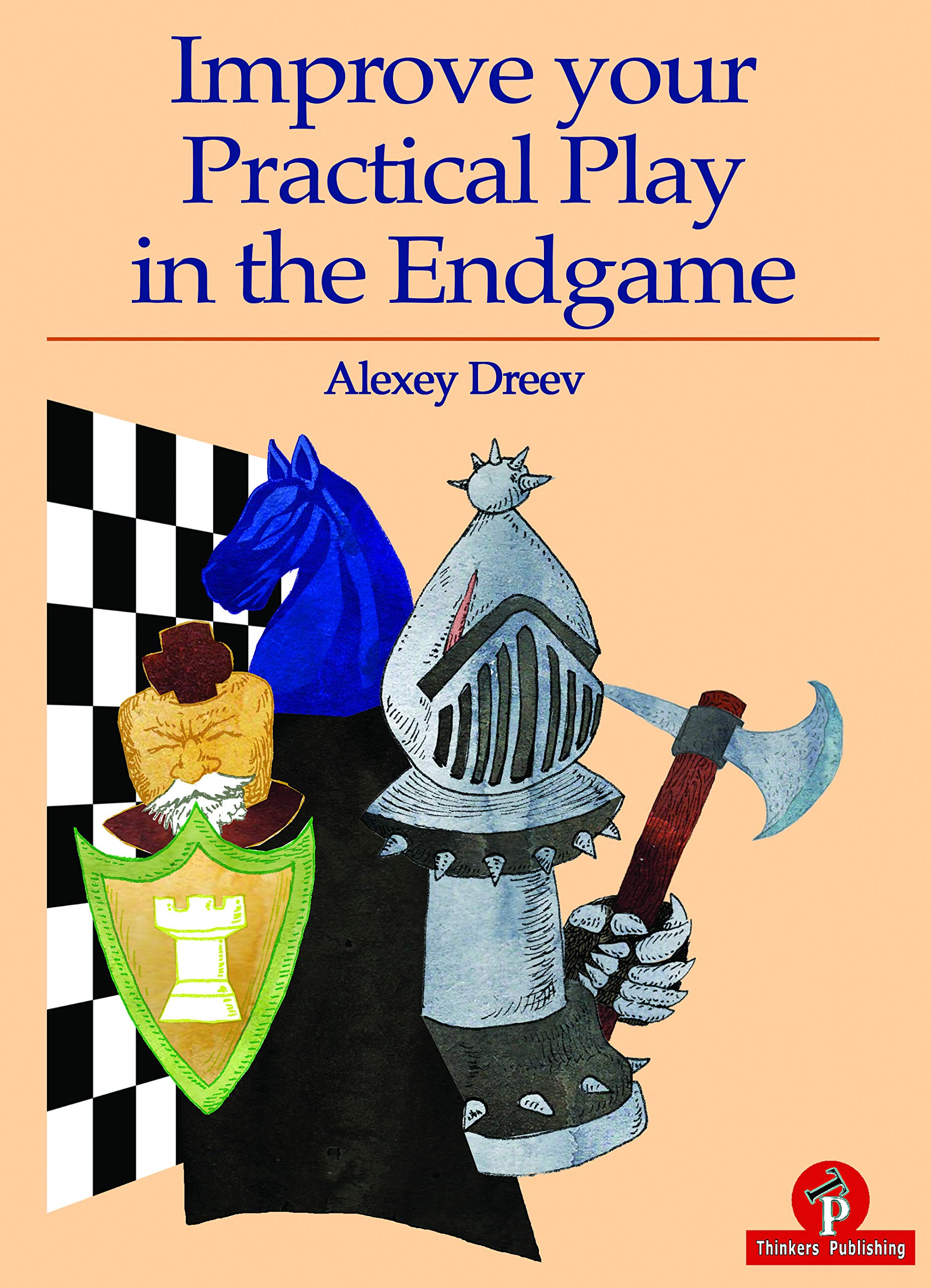
“After a bad opening, there is hope for the middle game. After a bad middle game, there is hope for the endgame. But once you are in the endgame, the moment of truth has arrived.” – Edmar Mednis
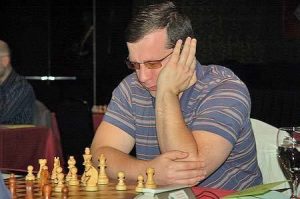
From Wikipedia :
Alexey Sergeyevich Dreev (Russian: Алексей Сергеевич Дреев; born 30 January 1969[1]) is a Russian chess player. He was awarded the title Grandmaster by FIDE in 1989.
While being a promising young chess talent, he was for a period coached by the world-class chess trainer Mark Dvoretsky.
As with every recent Thinkers Publishing publication high quality paper is used and the printing is clear. The book can easily be laid flat next to the board and does not require weights to prevent it from “self-closing” (a particular bugbear of ours !). Each diagram is clear and the instructional text is typeset in two column format, which, we find, enables the reader to maintain their place easily. Figurine algebraic notation is used throughout and the diagrams are placed adjacent to the relevant text and each diagram has a “to move” indicator.
There is no index which, unfortunately, is a standard feature of Thinkers Publishing books. Also missing is a bibliography.
This author of this book is Alexey Dreev, super GM who reached the quarter finals of the candidates in 1991.
This excellent book is packed full of instructive, exciting endgames, taken from top level games, including many of Dreev’s own games
extensively analysed with short pithy didactic comments.
Many of the examples are complex and require serious study to really gain the understanding of practical endgames.
This book is a pleasure to read with an excellent layout and plenty of diagrams making it easy to peruse anywhere.
The book is divided up into six chapters, but not on piece configurations (except for chapter 5) but on aspects of play:
Each chapter has eight or nine examples analysed in depth followed by a similar number of exercises which will really test the reader;
I did get a few right without moving any pieces.
One of favourite chapters is Particular Endgames which mostly covers positions with material imbalance such as Q v pieces
which the vast majority of players would find fascinating. There is an excellent example no 3 showing the use of a space advantage in B+2Ns endgame.
Following is the first example in the Chapter on Defence and a new perspective on a famous game.
My other favourite chapter is Pawn Endgames and Transitioning into Pawn Endgames which shows the rich complexity of king and pawn endgames
and the crucial importance of this topic.
In my experience, this transition is commonly mishandled by players of all standards: I have spoiled winning endgames in this area and I have seen countless games spoiled by poor play in pawn endgames, so study of this chapter will reap rich rewards for a reader.
FM Richard Webb, Chineham, Hampshire, 17th January 2020

Book Details :
Official web site of Thinkers Publishing
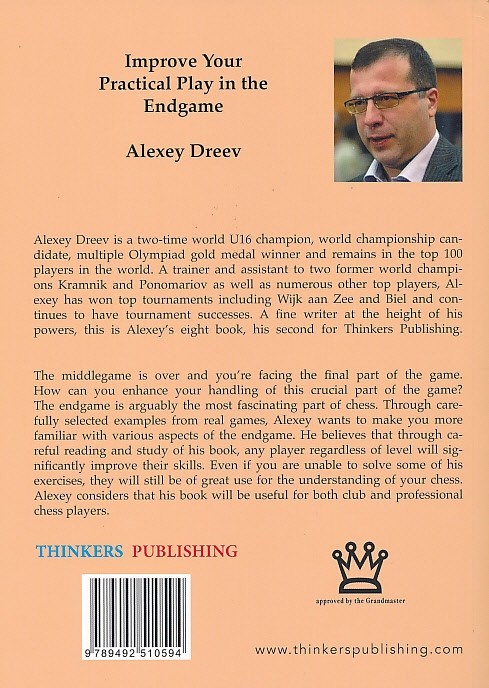
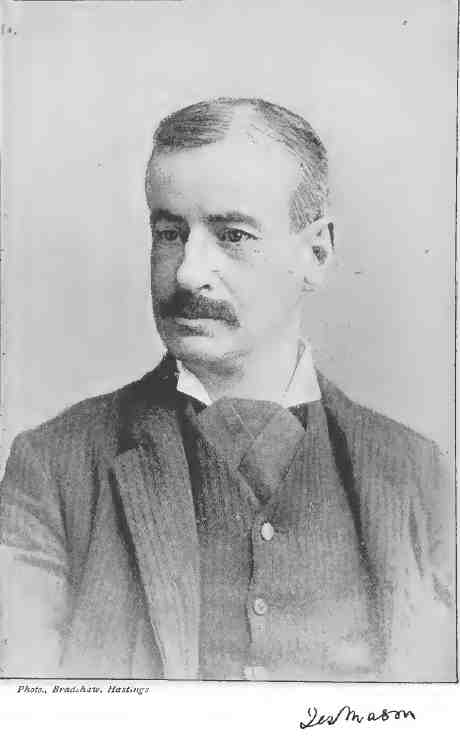
We remember James Mason who passed away on this day, January 15th, 1909.
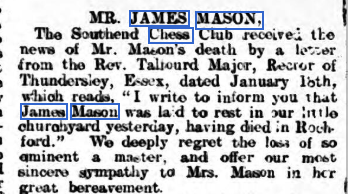
Here is his Wikipedia entry
From The Oxford Companion to Chess by David Hooper & Ken Whyld :

One of the world’s best half-dozen players in the early 1880s, journalist. He was born in Kilkenny, Ireland, and adopted the name James Mason (his real name is not known) when he and his family emigrated to the USA in 1861. He became a boot-black in New York, frequenting a Hungarian cafe where he learned chess. Coming to the notice of J. G. Bennett of the New York Herald he was given a job in the newspaper’s offices, a start in life that both suited his literary aspirations and gave him the chance to study the game; and in 1876 he made his mark, winning first prizes at the fourth American Chess Congress, Philadelphia, and in the New York Clipper tournament, and defeating the visiting master Bird in match play (411=4-4), Settling in England In 1878 he drew a match with Potter (+5=11— 5) in 1879, and at Vienna 1882, the strongest tournament held up to that time, he took third prize (+17=12-5) after the joint winners Steinitz and Winawer.
This was his finest achievement, but he had some other good tournament results; London 1883 (won by Zukertort), equal fifth; Nuremberg 1883, third after Winawer and Blackburne; Hamburg 1885, second equal with Blackburne, Englisch, Tarrasch, and Weiss after Gunsberg; Manchester 1890 (won by Tarrasch), equal fifth; and Belfast 1892, first equal with Blackburne. Fond of drink, Mason is alleged to have lost many games when in a ‘hilarious condition’. ‘A jolly good fellow first and a chess-player afterwards’ he never fulfilled the promise of his first years in England, Instead he wrote books on the game, in excellent style, notably two popular textbooks. The Principles of Chess in Theory and Practice (1894) and The Art of Chess (1895): both ran to several editions. Another of his books. Social Chess (1900), contains many short and brilliant games.
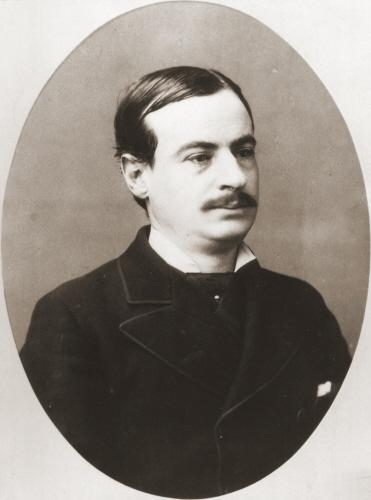
From The Encyclopedia of Chess by Harry Golombek :
A British master of Irish birth, Mason emigrated in early youth to the USA before settling in England in 1878. In America he won matches against Delmar, Martinez, Bird etc, ; In England he beat Mackenzie and drew with Potter, remaining unbeaten in match-play. He played in most of the important tournaments of the eighties and nineties, but the first prize he won on his début at the Philadelphia congress 1876 remained his only victory.

His best results were the third prizes at Vienna 1882 (behind Steinitz and Winawer), Nuremberg 1883 and Amsterdam 1889; =2nd at Hamburg 1885 and =3rd at Bradford 1888; also his 7th place in the great New York 1889 tournament. He wrote The Principles of Chess, London 1894, The Art of Chess, London 1895, compiled a collection of brilliancies in a series Social Chess, London 1900, and was co-author with Pollock of the 1895/6 tournament book. (Article by William Hartston).
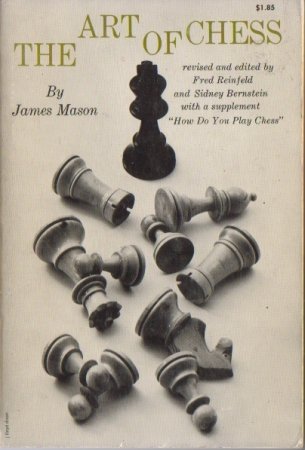
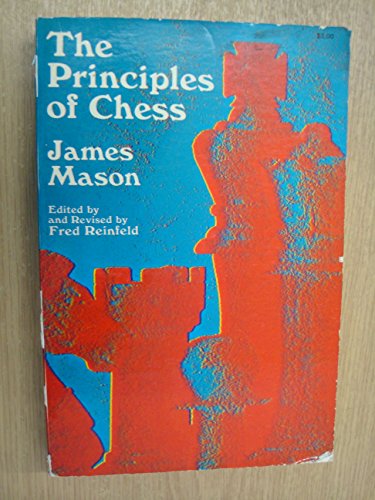
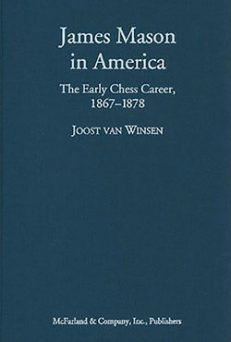
We reviewed the most recent book about James Mason here
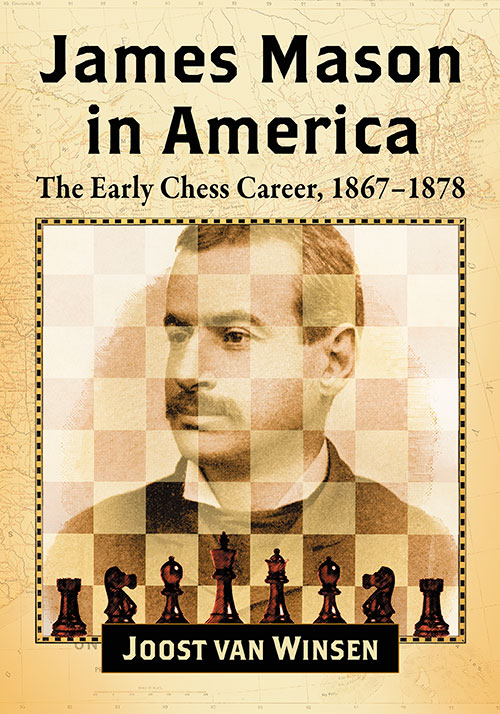
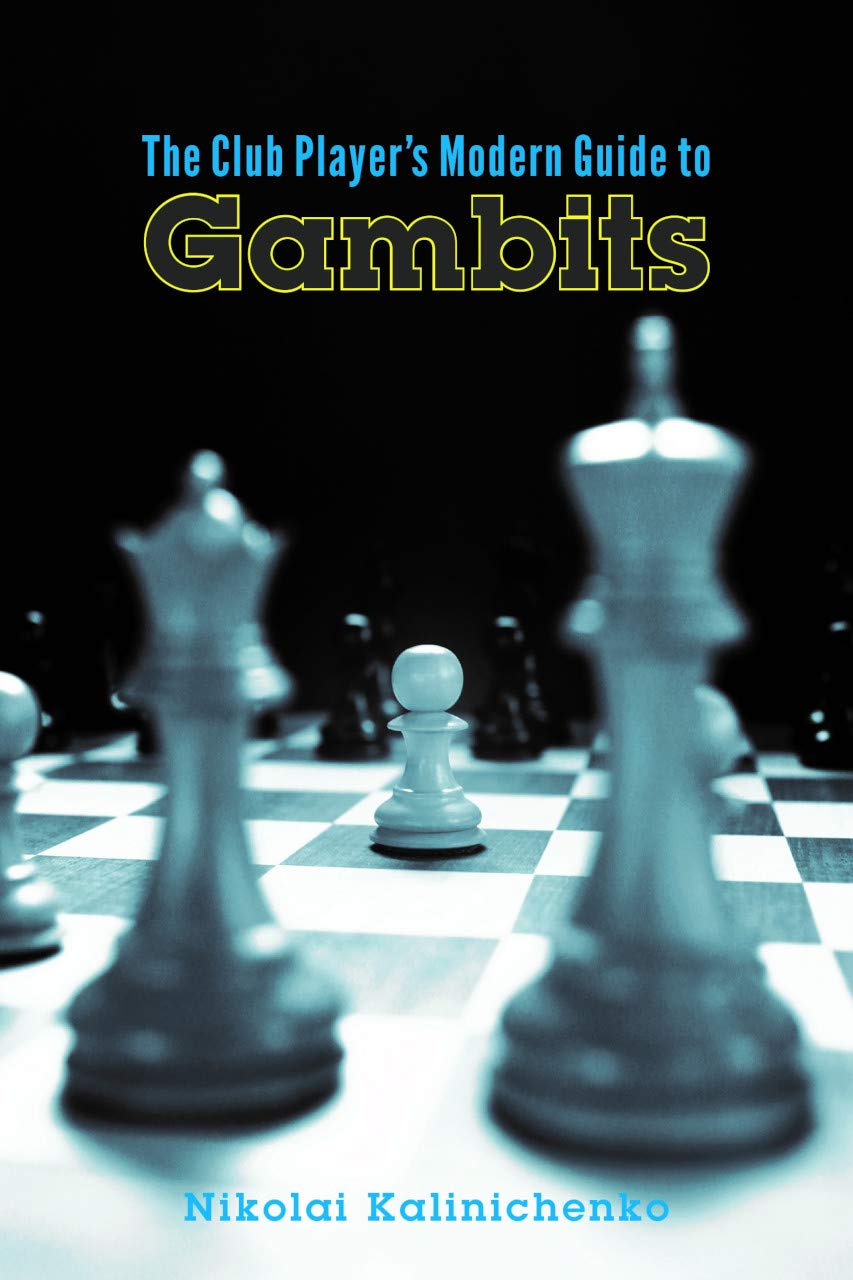
The Club Player’s Modern Guide to Gambits : Nikolai Kalinichenko
Nikolai Kalinichenko is an ICCF (correspondence) grandmaster and renowned theoretician.He has published no less than 50 books on various chess aspects in Russia, Germany, France, Spain, the U.K., USA, China and other countries. His most acclaimed English-language titles include “Vassily Ivanchuk: 100 Selected Games”; “A Positional Opening Repertoire for the Club Player”; “An Aggressive Opening Repertoire for the Club Player”; and “King’s Gambit”
This is an unusual book : the theme is sacrificing a pawn (or more) in the opening for various types of compensation such as initiative, development, control of squares or perhaps simply surprise !
Those with long memories will recall the diminutive Counter Gambits by Tim Harding published by British Chess Magazine in 1974.
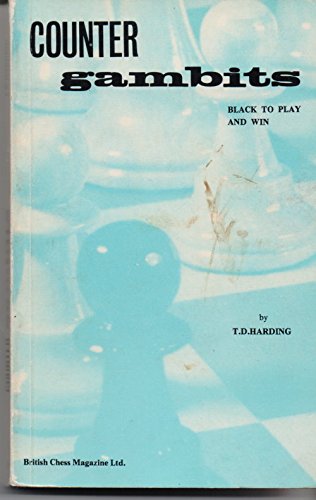
This new book could be seen (to some extent) as a successor to the above and details forty eight or so opening pawn sacrifices for both Black and White organised along the following lines :
Here is an excerpt from the publisher, Russell Enterprises, Inc. :
This is no ordinary opening book. This practical guide describes only such openings in which White or Black sacrifices material at an early stage of the game. They are called gambits (in Old Italian, gambetto means tripping).
The justification for such sacrifices can differ quite a lot. In most cases, the side that sacrifices material tends to get ahead of the opponent in development and/or opens lines to attack the enemy king. However, there are also gambits aimed at the occupation of the center (Blumenfeld Gambit), depriving the opponent of castling (Cochrane Gambit or Traxler Variation), weakening the opponent’s pawn structure (Anti-Moscow Variation), luring an opponent’s piece to an unfavorable position (sacrificing the b2-pawn), obtaining a certain positional compensation (Volga Gambit), etc.
Gambits are often associated with the romantic chess of the 19th century. Indeed, that was the heyday of such sharp openings as the King’s Gambit or Evans Gambit, but even nowadays, many games begin with one of the well-known or even innovative gambits. This should come as no surprise: gambits help to reveal the true essence of chess, “the triumph of spirit over matter.”
The concept of this book is to examine practical games and give theoretical insights in the notes rather than in stand-alone articles. Practice has shown this to be the most effective way of mastering new material. More often than not, recent games by the world’s top players have been chosen as an illustration, played in the last few years in particular. However, the most important classic games are mentioned as well. The present book analyzes almost 50 of the major gambit lines and systems. Almost 140 games are given in full, with many game fragments selected to illustrate the important deviations. And there is a special section about types of sacrificial themes, such as sacrificing the b2-pawn, sacrificing on f7, etc.
Readers who may wish to employ one of the examined gambit variations on a regular basis should, no doubt, study the specific books on that very opening, although in most cases the lines and ideas given are sufficient for a beginner or club player to include the system in his or her opening repertoire and give it a try.
One of the features of this book (which is a little unsual these days) is a potted history of each gambit, how it got its name and some idea of early adopters. This is most welcome.
For each gambit the author provides detailed analysis (which has been engine checked) plus from two to five illustrative games (usually) between strong players with copious notes.
Almost all (probably 90%) of the gambits are lines played at serious tournament level, possibly more likely in games with shorter times control and on-line where anything goes. Of the 48 probably only perhaps 3-4 would be considered suitable for the coffee-house or following a visit to the bar! These might be the Englund Gambit, The Latvian Gambit and the Blackmar-Deimer Gambit but don’t tell Tim Sawyer or any other BDG fan !
Amongst the most sound we have :
The Geller, Morra, Evans, Marshall (in the Ruy Lopez), Marshall (in the Semi Slav), Icelandic, Benko, Blumenfeld, Volga, From, Winawer Counter, Staunton, Albin Counter, Budapest, von Hennig-Schara, Krause (in the Slav) and Botvinnik gambits with the balance falling somewhere in between.
We were surprised not to find coverage of the Elephant (Queen’s Pawn Counter) gambit in the open games section but maybe the author considers it unsound :
We learnt a new name (The Been-Koomen Variation) for a familiar gambit :
that you might not have encountered previously.
Here is an example game that is analysed by the author but here analysed by Michael Kransekow :
So, in summary we have a book that is most suitable for club players and those perhaps looking for ideas for rapidplay or blitz games. Almost all of these gambits are considered to be “sound” (whatever this means in these engine dominated days) and most definitely practical and playable.
Snooty theoreticians might look down their noses at some choices forgetting that chess is a game (for most people) and to be enjoyed. This book is certainly not a rehash of “Unorthodox Chess Openings” by the late Eric Schiller and many of these gambit suggestions will liven up a dull repertoire.
John Upham, Cove, Hampshire 11th January 2020

Book Details :
Official web site of Russell Enterprises

The Safest Grünfeld Reloaded : Alexander Delchev
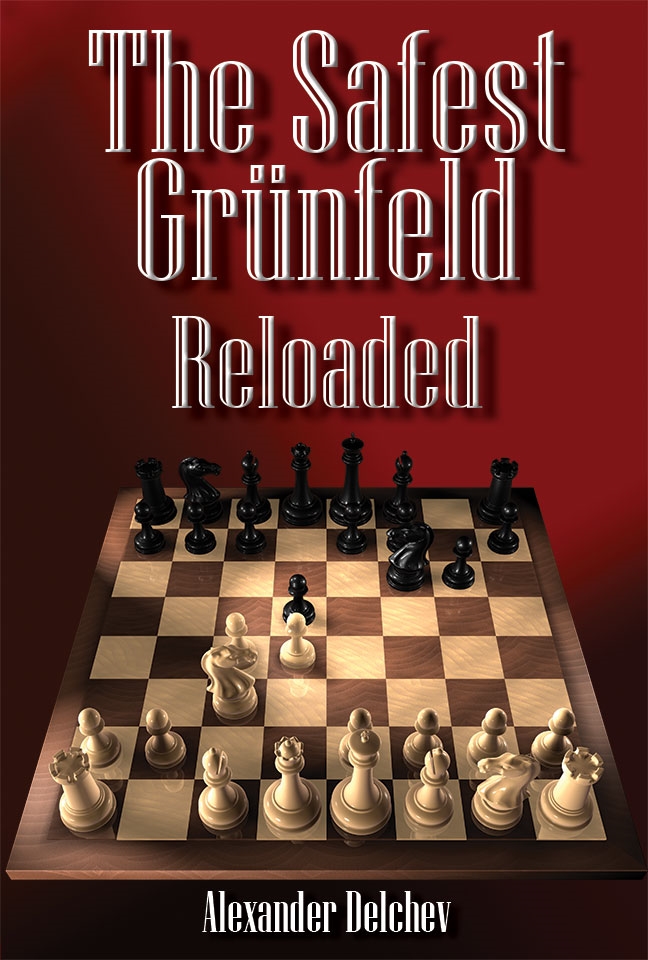
From Wikipedia :
Aleksander Delchev (Bulgarian: Александър Делчев; born 15 July 1971) is a Bulgarian chess player and writer. He was awarded the title of Grandmaster by FIDE in 1997. Delchev won the Bulgarian Chess Championship in 1994, 1996 and 2001. He played for the Bulgarian national team in the Chess Olympiads of 1994, 2000, 2002, 2004, 2006, 2008, 2010 and 2012 with a performance of 64.6% (+36=34-12).[1]
Selected tournament victories include the European Junior Chess Championship (1991–1992), the 47th Reggio Emilia chess tournament (2004–2005),[2] the 4th Open Master at the Sixth International Chess Festival in Benidorm (2007),[3] the International Open Championship of Croatia (2007)[4] and the Open International Bavarian Chess Championship in Bad Wiessee (2005[5] and 2013).[6] In 2011 he tied for 2nd-7th with Julio Granda, Ivan Šarić, Pablo Almagro Llamas, Maxim Turov and Mihail Marin at the 31st Villa de Benasque Open.[7]
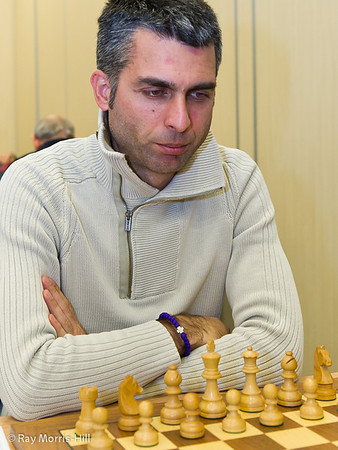
This new book is an extensive rewrite and update of the original (2011) edition by GM Delchev going from 348 to 352 pages.
From the Foreword we have :
This book is a completely new edition of the original The Safest Grünfeld of 2011. I rechecked all the lines and changed my recommendations according to latest developments of theory and my new understanding. Especially the anti-Grünfeld chapters are basically new. In my opinion top players have long lost hope to find advantage in the main lines and try early deviations. Anand chose 3.f3 against Gelfand and 5.Bd2 against Carlsen. So I devoted special attention to the Sämish approach with two different propositions. 3…Nc6 is less studied and probably more rewarding from a practical standpoint, while 3…d5 is in perfect theoretical shape, but requires more memorization. Every too often White players try to avoid the Grünfeld by refraining from d4 or c4. I added an additional chapter on the very topical lately Trompowsky and Barry/Jobava attack. The 7.Bc4 system in the Exchange Variation, and the Russian System have also underwent a major reconstruction
According to the author “The material in this book is up to date to the end of July, 2019”.
Chess Stars publications have earned themselves a prestigious place amongst publishers of opening theory books and “The Safest Grünfeld Reloaded” reinforces this reputation for sure. Their books are definitely not for beginners and moreover they are for serious players who want to know an opening deeply and in much detail. You can be sure that the analysis is at the sharp end of tournament practice by an author that plays the opening rather then just writes about it.
We have a total of fourteen chapters as follows :
(The “SOS Systems” chapter is coverage of somewhat speculative lines for White that have appeared in the New in Chess SOS series such as lines with h4, g4 and the like.)
For completeness there is a Bibliography, an Index of Variations, a Table of Contents but no Index or List of Games.
The treatment of each chapter more or less follows the same pattern and structure throughout : Each chapter is divided into sub-chapters as follows :
and this is pretty much the pattern for each chapter.
As a taster we delved into Chapter 5 on the topical Russian System
since this includes some of the sharpest and most highly analysed positions. The first main starting position is :
at which point Black has sensible choices such as 7…a6 (The Hungarian Variation), 7…Na6 (The Prins Variation), 7…Bg4 (The Smyslov Variation), 7…c6 (Boleslavsky) and 7…Nc6 (un-named but first employed in 1957 by Donald Byrne versus Reshevsky). Out of these the author recommends The Hungarian Variation as the Black’s primary weapon and failing that Black should consider 7…Nc6 (the “fallback” line) and an implied pawn sacrifice giving Black huge activity whilst White’s centre is under siege. Indeed, 7…Nc6 is labelled as “Hot” in Megabase 2020 and features regularly in current GM practise by such Grünfeld specialists as Peter Svidler and Maxime Vachier-Legrave.
Here is one of the example games (annotations not included here) :
The author is quite candid about his recommendations giving their strengths and weaknesses and there is definitely no “Winning with the Grünfeld” flavour to this objective tome. Generally the student can make their own choices to suit their own style.
In summary, this second edition is a substantial update and improvement of a first edition and we recommend it heartily to the serious player who finds themselves on the White or Black side of one of the most interesting defences to d4 & c4.
John Upham, Cove, Hampshire, January 10th 2020

Book Details :
Official web site of Chess Stars Publishing

The Modernised Dutch Defense : Adrien Demuth
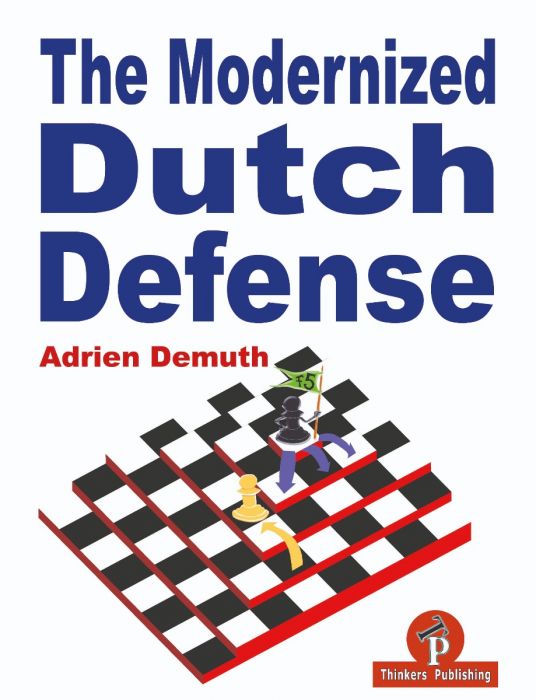
Adrien Demuth is a French chess grandmaster. Born in 1991, Demuth earned his international master title in 2011 and his grandmaster title in 2015. He is the No. 14 ranked French player as of March 2018.

This is his second title in the “Modernized” series from Thinkers Publishing, and like his previous book The Modernized Reti, this is a complete repertoire book providing a complete repertoire for black based around the Leningrad variation (2 …g6) against 1.d4 but also against 1.c4 & 1.Nf3. The Dutch Defence leads to dynamic and unbalanced positions which is ideally suited to players who want to play for a win with the black pieces.
The author is a recent convert to the Dutch defence and he describes how he took up the opening and had the confidence to use it in crucial games. And although the author now days prefers to play more positional openings he still retains the Dutch Defence in his repertoire.
The material is presented in three sections:
Part 1 – Early Sidelines after 1.d4 f5 (184 pages)
Part 2 – Classical Systems (210 pages)
Part 3 – Reti and English Move Orders (69 pages)
Like all the previous Thinkers Publishing books I have reviewed the production quality is excellent. The layout of this book reminds me of the Batsford Series of opening books that many older readers will remember as the material is presented as a series of variations without any illustrative games. The focus is exclusively on the opening phase with no mention of middlegame plans or typical pawn structures. All the games referenced in the book recent, within the last 5 years and the author provides a lot of interesting novelties backed up by his own analysis.
In part 1 the author provided a very detailed coverage of all the varied sidelines and gambits where black opts to play the Leningrad with 2..g6 rather than the Classical move order 2…e6. This is an important consideration in Chapter 3 as the author recommends the lines with 2…g6 rather than the topical 2….h6 against 2.Bg5. Also there are a number of tricky lines in chapter 5 where white plays c3 & Qb3 to prevent black from castling or where white plays an early h4.
Part 2 contains the main lines of the Leningrad Dutch and covers all of whites main options as well as the various lines where white plays the plays Bf4 which is very popular nowdays. One criticism that I do have in this section concerns the layout for Chapter 10 on p336 which doesn’t follow previous layout of chapters and perhaps the material should have been be split into two chapters covering the main lines and sidelines separately. Also there are several move order transpositions that can occur where white plays b3 or b4 in the main lines. However this does not detract from the content but the book would have benefitted from some more thorough proof reading.
Part 3 covers the reply 1…f5 against 1.Nf3 and 1.c4. The second chapter covers blacks responses to all of whites options where white omits playing d4,
One of the problems black players have when facing 1.d4 is that in most openings that white can play have a number of safe drawing lines that make it very difficult to play for a win against or unambitious lines where white can easily play for a small edge. However those options are not available against the Dutch defence. There are of course a number of gambits and aggressive lines that are available to white however if you are well prepared then you can enter these lines with confidence.
The bibliography is up to date and the oldest reference is 2014.
In summary this is an excellent book providing a complete repertoire for black against 1.d4, 1.Nf3 & 1.c4 It contains a lot of original analysis and sound recommendations. Although this opening may not be considered to be totally sound at GM level it is perfectly playable at Club level. I do have a number of (minor) criticisms of this book, perhaps the author could have provided a better explanation of the move order transpositions that can occur in the main lines and there are no illustrative games in the book. Also as with all Thinkers Publishing books I have reviewed there is no index of variations. But overall this would not stop me recommending the book if you want to take up the opening or of you already play the Dutch and wanted to add it to your library.
Tony Williams, January 5 2020
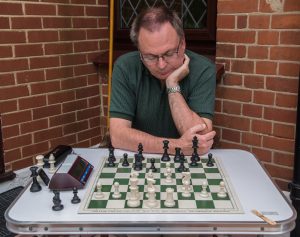
Book Details :
Official web site of Thinkers Publishing
